Are You Following These Inconvenient Packaging Practices?
By: phase1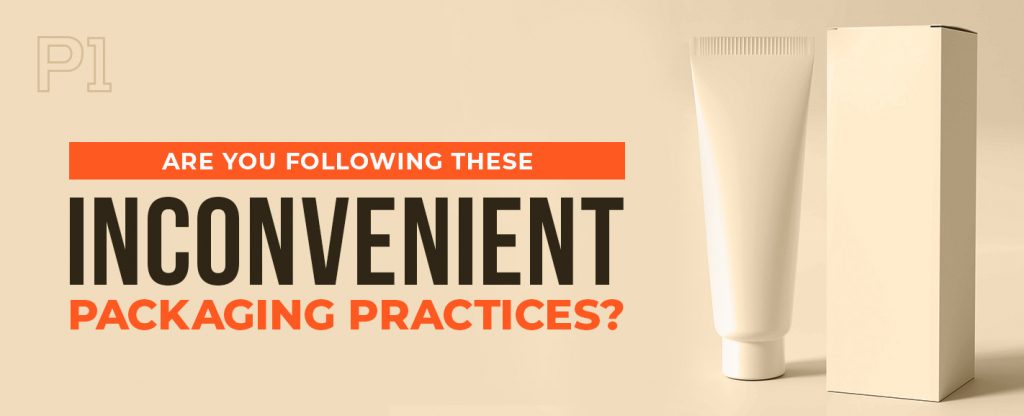
Product packaging can make or break your company’s marketing campaign. Many business owners are unaware of the true impact their products’ packaging have on their sales. The right packaging can give your customers a complete and satisfying experience with your product, but confusing or inconvenient packaging can cause consumers to go to your competition instead.
Proper packaging in marketing is crucial. The disadvantages of packaging your products the wrong way are many, but convenient packaging can take your product to the next level. Discover some common packaging mistakes companies make so you can choose a better option to satisfy your need for packaging.
Packaging a Bottle Inside a Box
It’s common for companies that sell shower gel, beauty products or other bottled goods to surround their products with a cardboard or plastic container. While this may seem like the norm, today’s consumers are more aware than ever regarding the deliberateness of product packaging and the materials used.
People want product packaging to make sense. The question in consumers’ minds is why a securely bottled product needs another layer of packaging. It seems unnecessary and redundant. This redundancy can cause some consumers to view your product’s design as weak or uncaring for the environment and sustainability. The added layer of the box around the bottle only leads to more waste.
A Purposeful Solution
The goal is to be purposeful in your packaging — down to the finest details. You can show your ideal customer that you’re purposeful in your decisions by eliminating that extra box around your bottled product altogether. Many companies surround their bottled products with a box to make room for more labeling information and marketing details. You can opt for a more innovative design that lets you ditch the box while still having room for your valuable printed information.
One option is to use a sustainable, flexible pouch to hold your product that would otherwise require a bottle. Such products often include liquids and other pourable substances, but these types of items would work great in a flexible pouch that includes features like a spout or a design that allows the pouch to stand on its own.
Such a design will show your customers that you’re deliberate with your packaging while also innovative in your approach. A different type of packaging than your competition will set you apart and cause consumers to give your item a second glance. Plus, flexible pouches leave plenty of room for you to add graphics or word-based content, giving you the freedom to market yourself as you need to. Consumers will appreciate interacting with your product without having to throw away an unnecessary box first.
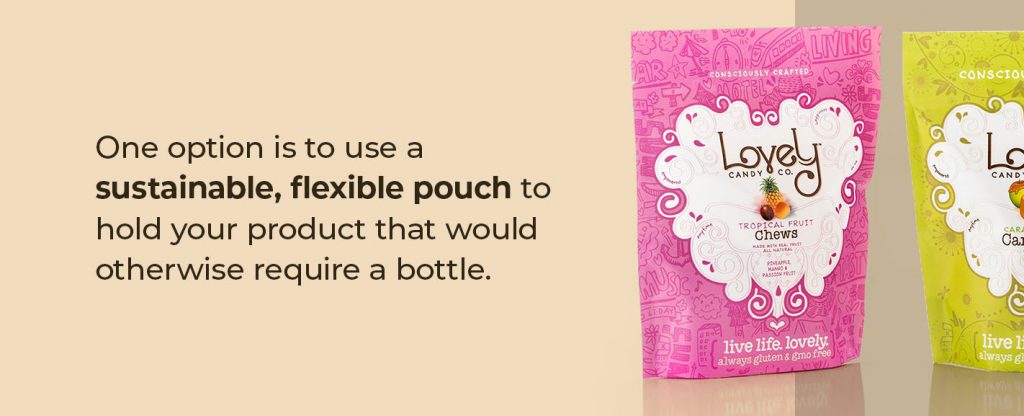
Using Too Much Styrofoam and Cardboard for a Small Product
Perhaps you’ve spent countless hours designing your product. You may have even spent valuable time and money designing the perfect packaging for your product. But the packaging may not end there — you still have to think about the boxes and shipping containers you’re using to send your products to buyers around the world who do their shopping online.
In today’s society, more people are shopping online than ever. In 2020, there was a 25.7% increase in e-commerce sales. The packaging you use to ship your product is an integral part of the experience you give your consumers every time they buy your product on the internet. And there’s no better way to make your customers scratch their heads in confusion than to ship a small product in a massive cardboard box filled with styrofoam and bubble wrap.
This type of shipping practice is wasteful, confusing and uncalculated, and buyers will take note. Consumers want their favorite companies to use packaging that makes sense and is better for the environment. Some shipping companies will even charge extra for packages that weigh too little for the size of the box. Such packages take up valuable space in the cargo area, lowering the shipping company’s profits.
A Space-Saving Solution
Instead, choose a package size and shape that makes sense for the product you’re shipping. Be aware of what you’re shipping and how you can best match your product’s dimensions with a shipping package that fits with the least amount of empty space possible.
With the rise in popularity of “unboxing” videos on YouTube, you can see that people care about their entire experience when receiving a product. This may include the shipping box in e-commerce situations. Using a customized and properly sized shipping box shows that you care about your customers’ experience from the moment they see the package on their doorstep to when they use your product for the first or hundredth time.
Using Unsustainable Packaging
The previous two examples of bad packaging decisions have something in common — the lack of sustainability. In decades past, consumers thought little about the kinds of packaging companies used and whether that packaging was good for the environment. Today’s consumers behave much differently, putting a lot of thought and care into choosing companies that commit themselves to environmental consciousness.
Unsustainable packaging can include practices like putting a bottle in a box or using packages that are too big for the product being shipped. But it can also include using new cardboard instead of recycled cardboard or getting your boxes from companies who do little for sustainable goals. To put it simply, consumers can tell if you’re using sustainable packaging, and you may lose some customers if you aren’t.
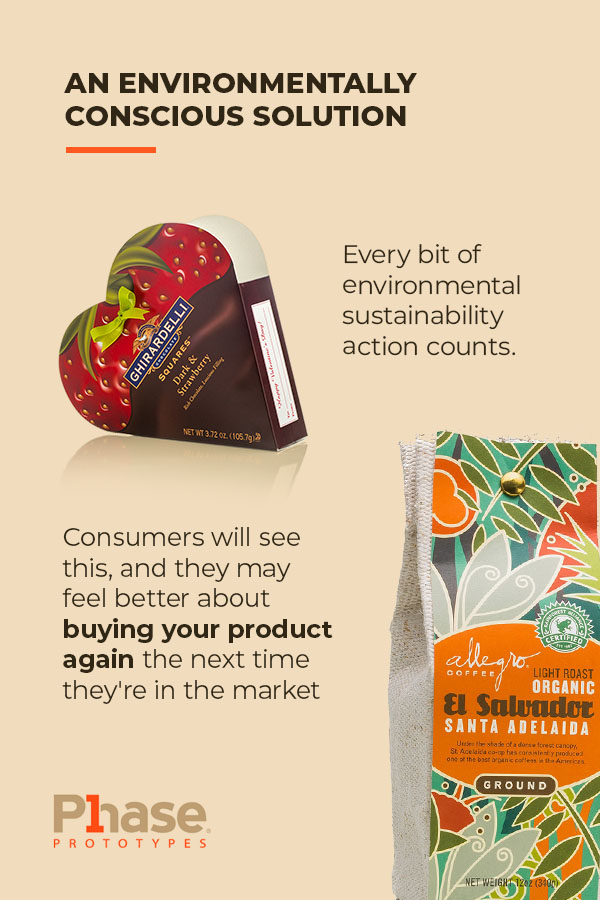
An Environmentally Conscious Solution
You should strive to use sustainable packaging options whenever you can. Sometimes this involves packaging your product in a way that makes it easier for the consumer to recycle any waste from your product. Use recyclable packaging that is easily compressed or disassembled to save room in the recycling bin and encourage recycling. You can also put graphics or words on the box or bag letting consumers know that they can help you help the environment by recycling the product packaging when they’re finished.
Every bit of environmental sustainability action counts. Consumers will see this, and they may feel better about buying your product again the next time they’re in the market for what you sell. Consumers want to feel like they, too, are helping the environment, and sustainable packaging can help them achieve this.
Sending Mixed Messaging With the Design
Your product’s packaging plays a crucial role in your customers’ perceptions of your product. In 2009, PepsiCo rebranded its Tropicana orange juice line of products. They replaced the classic image of the red and white straw coming out of the ripe orange with a sleeker, more modern design. They thought the minimalistic and clean approach would appeal to today’s customers, but the opposite turned out to be true.
Longtime customers rejected the rebranding of Tropicana. PepsiCo underestimated its customer base’s attachment to the old logo, and the change even caused some confusion. People were unsure if the product was the same Tropicana orange juice they had come to know and love. The change resulted in customer uncertainty, and this led to a decrease in sales. Talk about an inconvenient packaging decision!
An Intentional Solution
You should be intentional with every aspect of your package’s design. Use detailed labels to show your customers exactly what they’re looking at or holding in their hands. The messaging on your packaging should tell potential customers what they’ll use the product for and maybe even a bit about your company’s story or values. This can help your customers feel better about buying your product because they’ll feel like they know you — you’re more than just a random company.
Plus, customers will eventually grow attached to the messaging on your packaging and identify your company with it. This is fully evidenced in the Tropicana example. Changing aspects of your design can be confusing and send mixed messages to your target audience. Learn from PepsiCo’s mistakes and be intentional with the design and messaging of your product packages.
Packaging That’s Hard to Open
Many companies use product packaging that looks great on the shelf, but this is where the positives end. One of the last things you want is for your packaging to be so secure and airtight that it causes your customer to struggle or even hurt themselves trying to open it.
Secure packaging could be great for keeping your product fresh while it waits for someone to buy it and use it. Examples include jars for edible products and sealed packages for electronics. But packaging that is hard to open can frustrate your customer. They then associate this frustration with your product and your company as a whole. One-time customers may decide to buy from your competitor next time — maybe their product will be easier to open.
An Easier Solution
You want your customers to have an easy time opening your packages and interacting with your products. You can facilitate more positive opening experiences for your customers with easy-to-open packages or by putting opening instructions on the packaging itself. Perforated or easy-tear bags are also a great idea for edible products, as these can keep your products fresh and easy to open.
Also, remember the recent popularity of internet unboxing videos. Imagine if someone posted an unboxing video of your product and spent the beginning of the video awkwardly trying to open your product and talking about how much they were struggling. This could be embarrassing for your brand image, so be sure your products are easy to open before approving any packaging design.
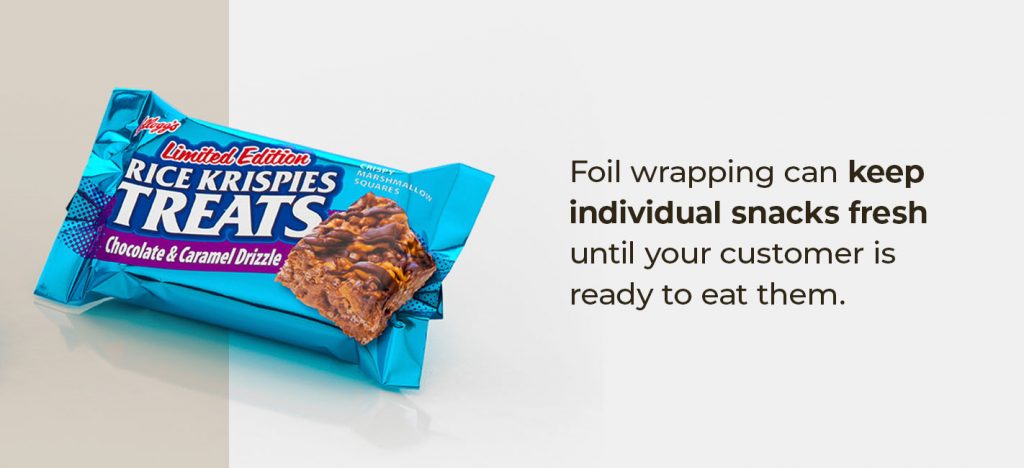
Packaging That Makes the Product Difficult to Carry
In today’s fast-paced society, convenience is key. People want the products they need to be portable and easy to use. This is especially true in the snack food industry. People want healthy and crave-able snacks on the go, but so many snack packages are bulky, large or downright impossible to take with you when you’re in a hurry.
Some of the most recognizable culprits of this inconvenient packaging mistake are nut companies. Often, nuts come in large, cylindrical tins that, upon further examination, could leave people wondering why in the world these cylinders have been the most popular design choice for decades.
These packages are impossible to fit in the average-sized purse and take up way too much space in a backpack or lunchbox. And even with this bulkiness, it can be hard to fit one’s hand in the opening to get a taste of the salty or honey-roasted treat.
A Convenient Solution
Help your customers enjoy your products by making them more convenient to interact with. For instance, nut companies would do well to transition from those bulky tins to a more flexible, portable packaging option like resealable pouches. Snack pouches easily fit in purses or lunch boxes and can include a wide opening at the top for easy access to the food within.
Other convenient packaging options include foil wrapping that can keep individual snacks fresh until your customer is ready to eat them. Bags with handles also give your customers a much easier experience when carrying your product around. People want convenience, and you can give them what they want with the right packaging decisions.
Packaging That Affects the Quality of the Product
Many companies realize too late that their packaging caused the quality of their product to decrease on the shelf. A classic example of this phenomenon can be seen in the coffee bean industry. People love coffee for more than the caffeine — they want to taste the many subtle flavors that differ from bean to bean. For some people, brewing the perfect cup of coffee is an art.
Now imagine the disappointment when a customer takes their first sip and realizes the coffee tastes like the packaging it came from. In these instances, the metal or plastic packaging can interact with the coffee beans and cause the beans to take on a slightly plastic or metallic taste.
A Beneficial Solution
Your packaging should enhance the experience of your product, unlike the example above. In the case of coffee beans, pouches made of sustainable materials can help the environment and the taste of the coffee beans. Paper or fabric pouches won’t tarnish the taste of coffee beans like metal or plastic will. Plus, large tins can take up a lot of space in your coffee cabinet or freezer. Choose a smarter, more beneficial option instead — one that preserves your product’s quality.
Upgrade Your Product Packaging With Help From Phase 1 Prototypes
Take your product packaging to the next level with Phase 1 Prototypes. We have the custom packaging solutions you’ve been looking for to make your products more convenient for your customers. The right packaging and print specifications can set your product apart from the competition and help your company experience new levels of growth.
Contact us today for more information or request a quote to take the next step. We look forward to helping you achieve your packaging goals!

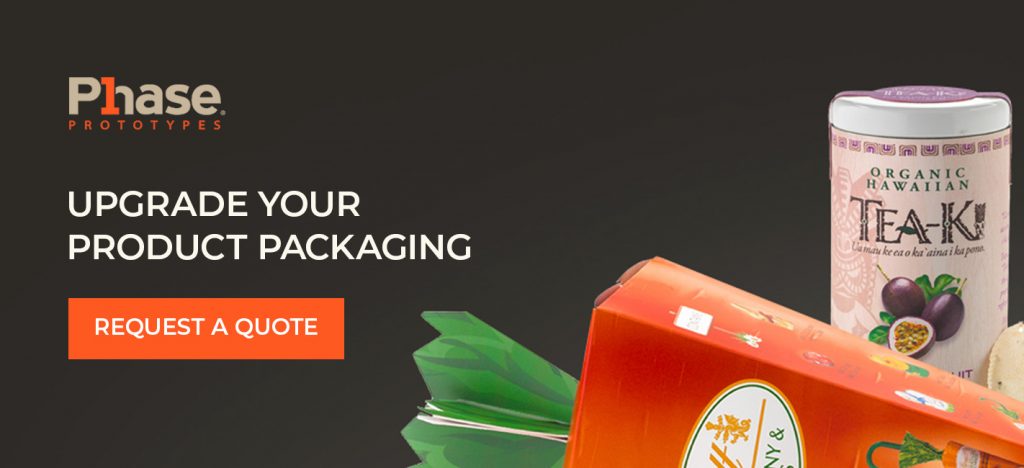
Leave a Reply